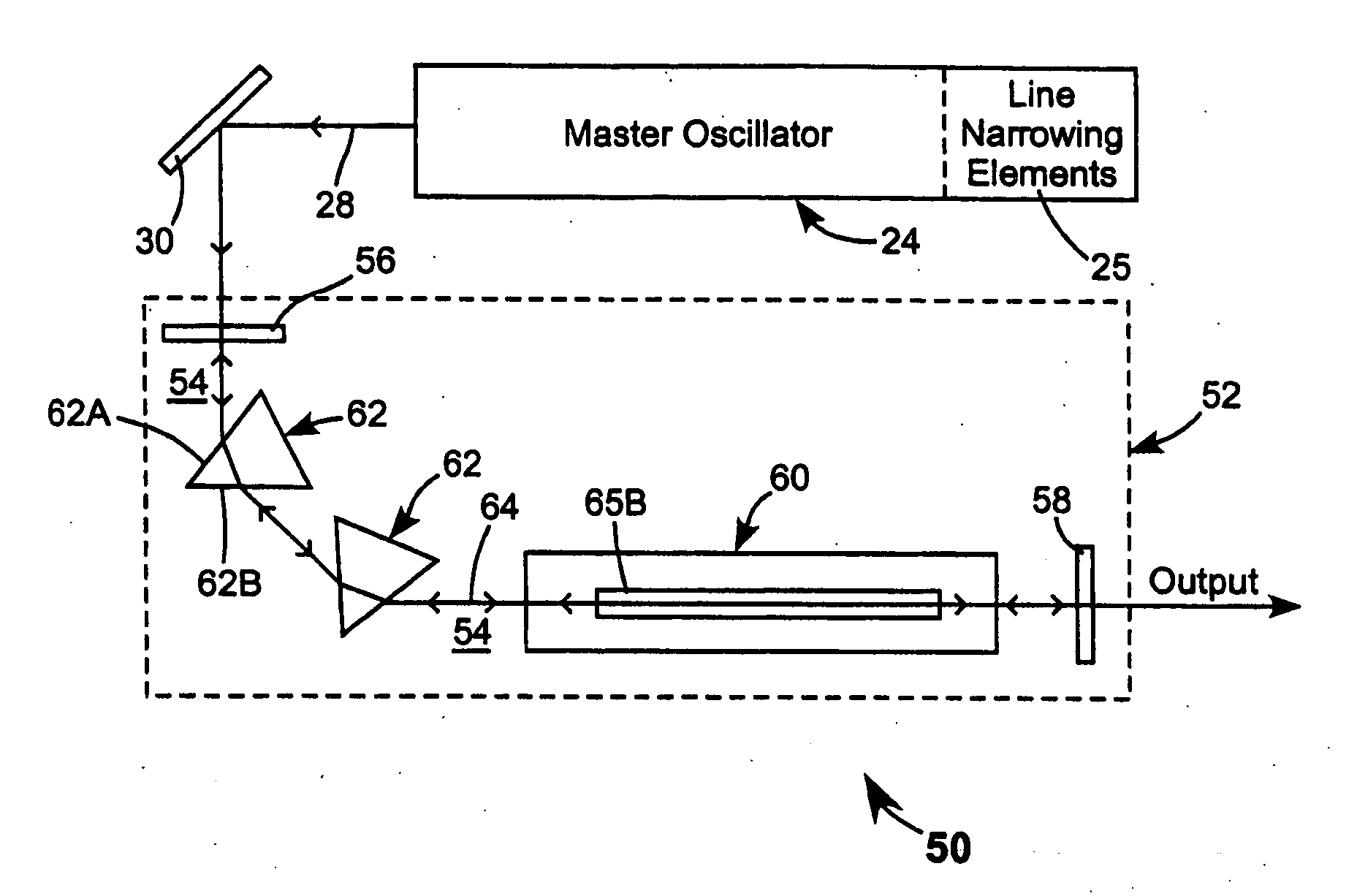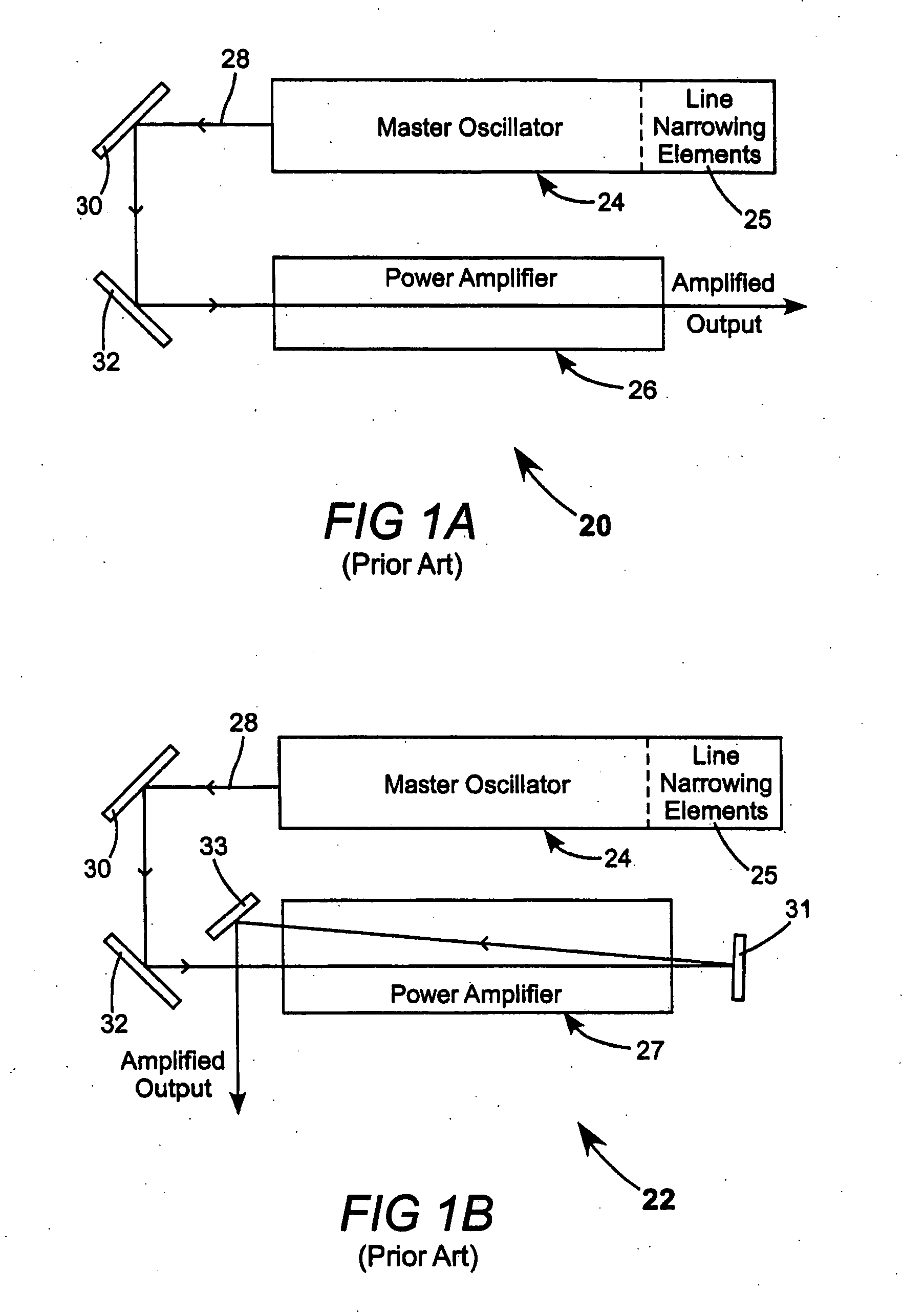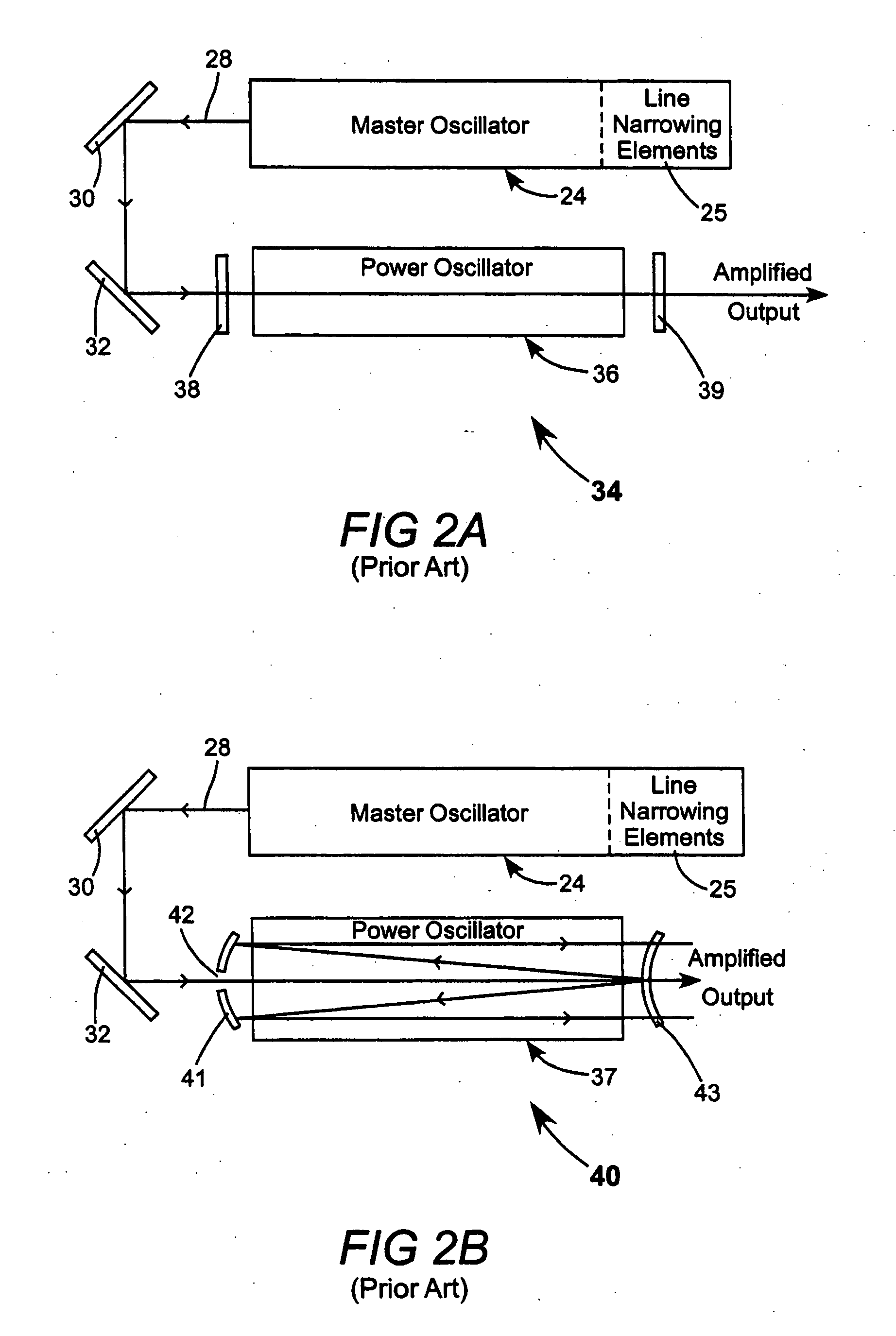Bandwidth-limited and long pulse master oscillator power oscillator laser systems
a laser system and master oscillator technology, applied in the direction of laser details, optical resonator shape and construction, active medium materials, etc., can solve the problems of limited stretching ratio of pulses, add to energy inefficiency, and energy inefficient, so as to reduce power density and reduce power density on telescope mirrors.
- Summary
- Abstract
- Description
- Claims
- Application Information
AI Technical Summary
Benefits of technology
Problems solved by technology
Method used
Image
Examples
embodiment 110
[0085]FIG. 13 is a long beam-axis view schematically illustrating a ninth preferred embodiment 110 of a MOPO in accordance with the present invention including a master oscillator 24 having line-narrowing elements 25, and a BLPO 112 including a ring resonator 114. Ring resonator 114 includes a gain chamber 60 and two Pellin-Broca prisms 104. Pellin-Broca prisms 104 serve as fold mirrors for resonator 114. Each of the Pellin-Broca prisms is arranged as a beam compressor, as discussed above with reference to FIG. 12A, for compensating for natural divergence of a laser beam circulating in the resonator. In the relative (orientation) orientation shown, with each of the prisms (prism faces) in a non-Brewster alignment with the circulating beam the prisms also provide some limited dispersion as discussed above. Ring resonator 114 is completed by two fully reflective fold mirrors 120 and 122, a partially transmissive fold mirror 124, and a prism 126 having a face 126A thereof arranged such...
embodiment 130
[0088]FIG. 14 is a long beam-axis view schematically illustrating a tenth preferred embodiment 130 of a MOPO in accordance with the present invention, having a master oscillator 24 including line-narrowing elements 25, and a BLPO 132 including a ring resonator 134. Ring resonator 134 includes a gain chamber 60 and two Pellin-Broca prisms 104. Pellin-Broca prisms 104 serve as fold mirrors for resonator 134. In this relative orientation the beams provide a relatively high dispersion. In resonator 134 each of the Pellin-Broca prisms is arranged to turn light though 90° as discussed above with reference to FIG. 12. A beam entering and leaving the prisms has the same width and is incident on refractive surfaces of the prism at the Brewster angle. Accordingly, there is no beam compression. Ring resonator 114 is completed by a fully reflective fold mirror 92, and a partially transmissive fold mirror 90 that serves as an outcoupling mirror. A seed beam 28 from master oscillator 24 is inject...
embodiment 206
[0113]FIG. 23 is a long beam-axis view schematically illustrating a sixteenth embodiment 206 of a MOPO laser in accordance with the present invention. MOPO 206 has a master oscillator 24 including line narrowing elements 25, and a power oscillator 208. Power oscillator 208 has a ring-resonator 115 with optical elements thereof arranged similarly to those of resonator 114 of power oscillator 112 of FIG. 13. Surface 126A of a prism 126 serves as a beamsplitter for coupling a portion of circulating laser radiation out of the resonator as in the above-described resonator. The circulating beam is incident at grazing incidence on surface 126A for expanding the beam and thereby reducing optical fluence on the surface.
[0114] In resonator 115 of FIG. 23, prism 126 is located in a gain chamber 61. Gain chamber 61 has a section 61A thereof including discharge electrodes (only lower electrode 65B shown) and a portion 61B thereof including prism 126. A front Brewster angle window 67 is located i...
PUM
 Login to View More
Login to View More Abstract
Description
Claims
Application Information
 Login to View More
Login to View More - R&D
- Intellectual Property
- Life Sciences
- Materials
- Tech Scout
- Unparalleled Data Quality
- Higher Quality Content
- 60% Fewer Hallucinations
Browse by: Latest US Patents, China's latest patents, Technical Efficacy Thesaurus, Application Domain, Technology Topic, Popular Technical Reports.
© 2025 PatSnap. All rights reserved.Legal|Privacy policy|Modern Slavery Act Transparency Statement|Sitemap|About US| Contact US: help@patsnap.com



